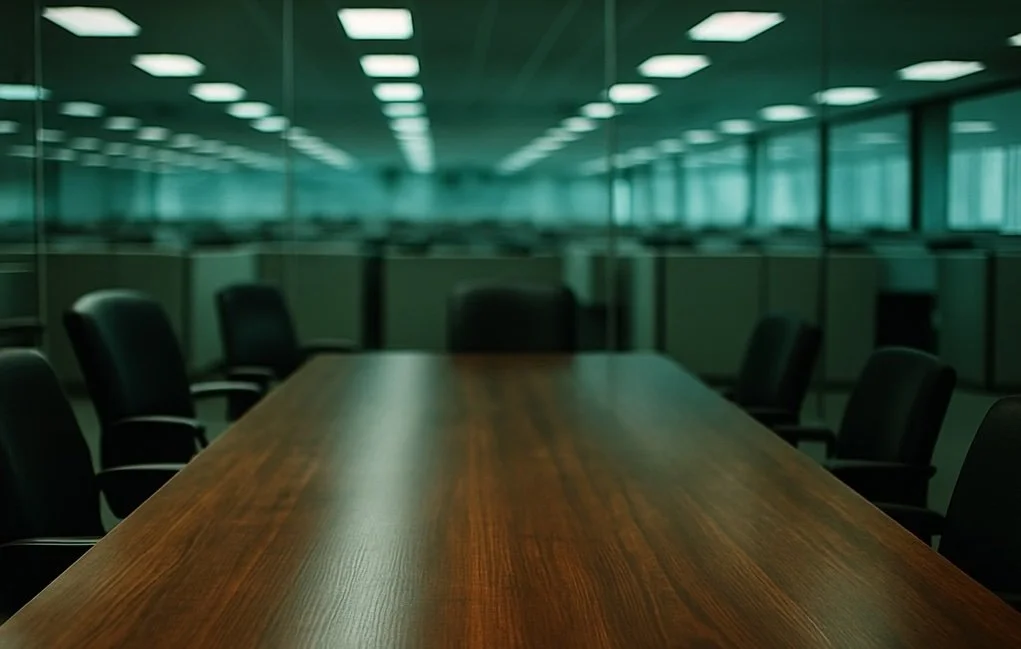Design Isn’t Just a Department. It’s a Mindset.
A conference room table. Created with AI.
Part of the Table
Design is often treated like a department. A silo. A team that owns a specific stage in a process, typically after decisions have already been made.
This isn’t another “seat-at-the-table” blog post. I’m as tired of that phrase as you are. What I’m trying to say is that design should be within the structure of the table itself, not just present nearby. Design thinking is not a tool that only designers can wield. It’s a foundational way of recognizing problems and validating solutions.
In this new era of productivity gains, where the everyday minutiae of creating solutions can be offloaded to AI, the role of the design department is shifting. Most people in an organization don’t truly understand design thinking, which is where designers can step forward as guides.
Design isn’t a handoff point. It’s part of the way the organization thinks and works. A good designer isn’t threatened by AI. They see it as a gift. It’s another way to elevate the function of design, and embed its value more deeply into the collective thinking of the company.
Good design doesn’t happen in isolation. It happens when everyone (product managers, engineers, marketers, and leadership) is thinking about how their decisions affect the user’s experience. When design isn’t boxed into a single phase, but woven into every conversation. The designer’s role then shifts from execution to guidance. The designer is now tasked with helping the team think through tradeoffs, behaviors, and flows with the user in mind.
From Execution to Integration
Historically, organizations have viewed design as this kind of blocker, a step that seems necessary but feels excessive. The strategy is already in place, the roadmap has been decided, why is design trying to validate our great ideas? Can’t we just move? And when designers object to the compromises and tradeoffs requested by engineering, it can seem like they’re standing in the way of progress.
This is where people across the organization start to feel like design isn’t executing. The job’s not getting done, and now the timeline is in jeopardy.
But when design is integrated earlier in the process, during discovery, and in decision-making, it becomes something else entirely. And notice I didn’t say when a designer or the design department is integrated earlier. I said design. Once this happens, it stops being reactive and starts becoming strategic.
Designers can help shape that conversation. They can be brought in during early development to begin to lend their experience and speak for the user. They can explain how user impact translates into business impact.
Integrated design aligns the work across teams. It prevents wasted effort and, more importantly, reduces the perception that design is standing in the way. It surfaces human needs sooner. And perhaps most critically, it makes the entire team better at thinking from the outside in.
The Hidden Cost of Isolation
When design is treated as a separate track, a few predictable problems emerge.
First, you get fragmentation. Product is chasing business goals. Engineering is solving technical puzzles. Marketing is crafting brand narratives. And design? Design is stuck trying to connect all the dots with a clean UI. That’s not collaboration. That’s damage control.
Second, you get friction. Designers are asked to revise work that was built without their input. Research insights are ignored because they came in too late. Teams fall into endless cycles of feedback and rework. It’s not because people can’t execute, but because design was kept at arm’s length until it was too late.
And finally, you get burnout. Designers who are passionate about creating meaningful experiences get worn down by having to fight for every decision. When design is isolated, it becomes exhausting. When it’s integrated, it becomes energizing.
Design as Shared Responsibility
Design thinking shouldn’t live only with the design team. It should be part of how your entire organization approaches problem-solving.
Product managers should think in terms of user flows. Engineers should be empowered to flag interaction issues, not just bugs. Executives should understand that UX debt is just as real as technical debt. And designers? They should focus on enabling this kind of thinking across the organization.
This is how design scales. Not just by hiring more designers, but by building more design awareness into every corner of the business. The goal isn’t to make everyone a designer. The goal is to build a culture where design is understood, respected, and practiced as a shared language.
Conclusion
Design isn’t just a department. It’s a way of thinking.
This doesn’t mean giving design final say. It means giving design influence. It means treating the user experience as a team-wide responsibility. And it means empowering designers to act as guides, not just executors.
The next era of product development will belong to companies who understand this, and then put it into practice. The ones who stop treating design like a service, and start treating it like the structure of the organization.
That’s where the real work happens. That’s where better products begin.
💬 Join the conversation on LinkedIn

